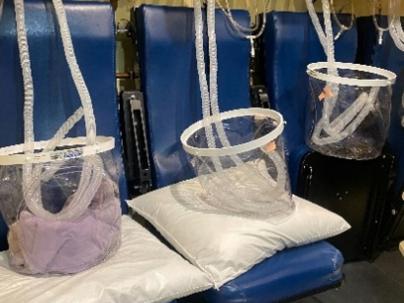Striving for better results through medical innovation
Teams at VCH are continually constantly working on important medical advancements.
On this page
- Overstitch procedure at Vancouver General Hospital: A Canadian first
- Delivering the power of oxygen—inside the hyperbaric chamber at Vancouver General Hospital and some of the team members operating it
- Using AI to support faster stroke care for patients in central coast communities
- Specialized wound care for diabetics
As a world-class innovator in medical care, research and teaching, VCH’s readiness to work together across professional disciplines, to take risks and defy convention and to build the right partnerships has helped accelerate ideas through research and discovery and in developing improvement to health care.
Overstitch procedure at Vancouver General Hospital: A Canadian first
A team at Vancouver General Hospital performed Canada’s first overstitch procedure. The team successfully used the overstitch with an endoscope to suture a chronic leak in a patient’s bowel, a less-invasive procedure than traditional surgery.
The Health Canada approved overstitch device enables new treatments for a variety of gastrointestinal disorders and promises a less invasive option with faster recovery compared to some traditional surgeries. It will likely be used in an increasing number of procedures, potentially helping hundreds of patients every year.
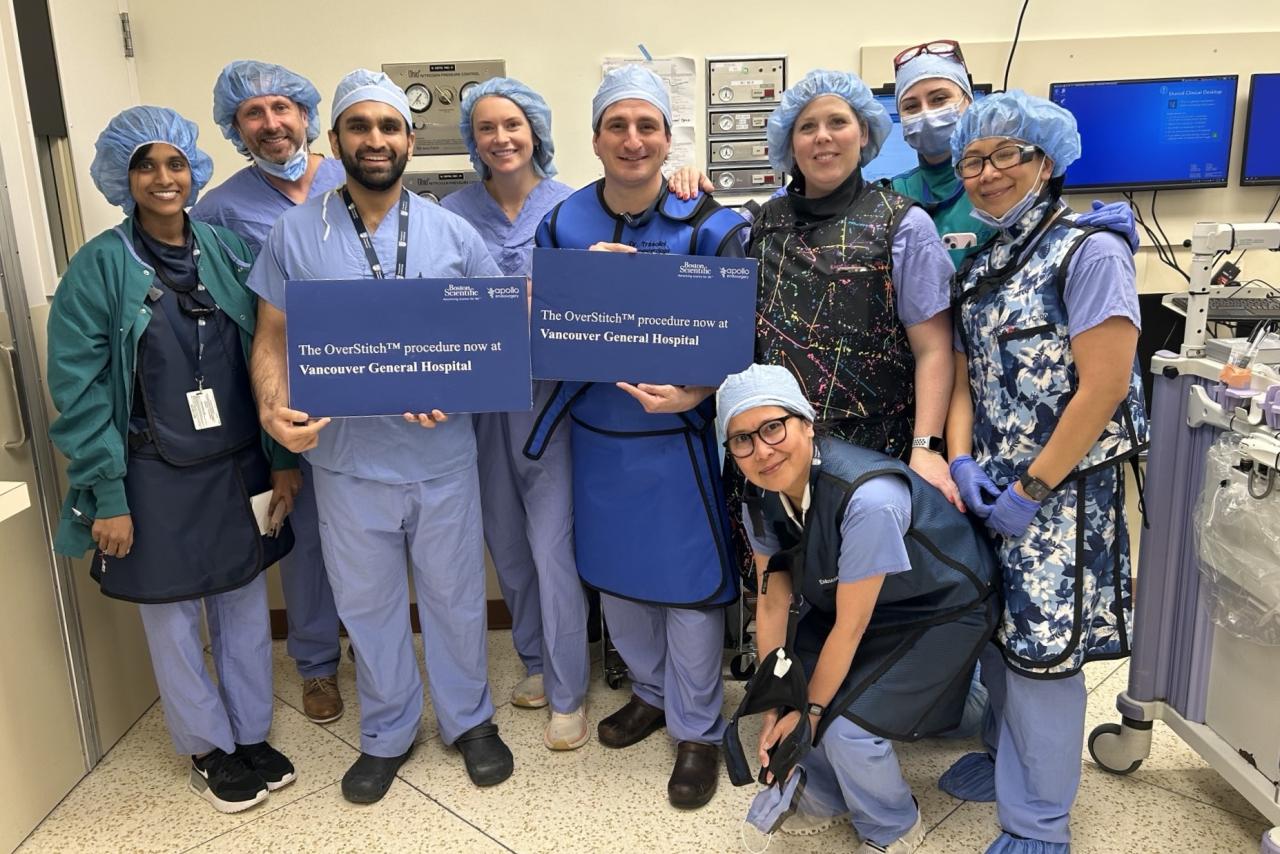
Gastroenterologist Dr. Roberto Trasolini and his team after performing the first overstitch procedure at Vancouver General Hospital.
Delivering the power of oxygen—inside the hyperbaric chamber at Vancouver General Hospital and some of the team members operating it
The Hyperbaric Oxygen Unit at Vancouver General Hospital has increased its output by 75 per cent, delivering hyperbaric oxygen therapy sooner to patients from across B.C.
“In an average day, the team sees patients from all walks of life, from recovering cancer patients to young people experiencing sudden hearing loss, through to those grappling with diabetes complications," said Dr. Afshin Khazei, Medical Lead, Hyperbaric Oxygen Unit, VCH. “One thing they all have in common is the benefit they receive from hyperbaric oxygen therapy. And now we've been able to go from treating 16 patients a day to 28, which is a significant increase."
The unit's submarine-like chamber creates a pressurized environment to deliver high levels of oxygen to groups of patients during two-hour “dives." Hyperbaric oxygen therapy is commonly known to treat carbon monoxide poisoning and decompression sickness in scuba divers, however, the treatment has been incredibly effective for many conditions, including repairing tissue and organ damage from cancer radiation therapy and preventing limb amputation in patients with diabetes complications.
VGH's Hyperbaric Oxygen Unit is the province's only referral site for hyperbaric oxygen therapy. Less than three years ago, it operated just two dives a day.
With the support of a VGH and UBC Hospital Foundation donor, the unit set out to trial three daily dives in 2022. Within nine months, they saw a 32 per cent increase in output, with 1,200 additional treatments and a decrease in wait list times. The data continued to show sustained improvement to patient outcomes. By spring 2024, the unit was approved for four dives per day.
Using AI to support faster stroke care for patients in central coast communities
When it comes to stroke diagnosis and treatment, timing is everything. To treat strokes quickly and effectively, a treatment called Endovascular Therapy may be used to remove clots and restore blood flow to the brain, but this treatment was previously only available at Vancouver General Hospital.
A team across VCH is piloting an exciting initiative that will expand the use of AI-driven imaging software to hospitals on the central coast. This technology will quickly analyze CT scans, determining the severity of a stroke and alerting Vancouver General Hospital neurologists right away if treatment is needed.
“We want to make sure that following a stroke, individuals living in coastal communities get access to the care they need quickly," said Kelly Sharp, Regional Stroke Lead, VCH. “Three teams across VCH are piloting an exciting initiative that will expand the use of AI-driven imaging software to our hospitals located on the central coast.”
Minimizing the time to treatment is critical for preventing brain damage and improving recovery and Indigenous people living in remote communities face a higher risk of stroke. Now rural and remote hospitals can provide more equitable access to stroke diagnosis and treatment.
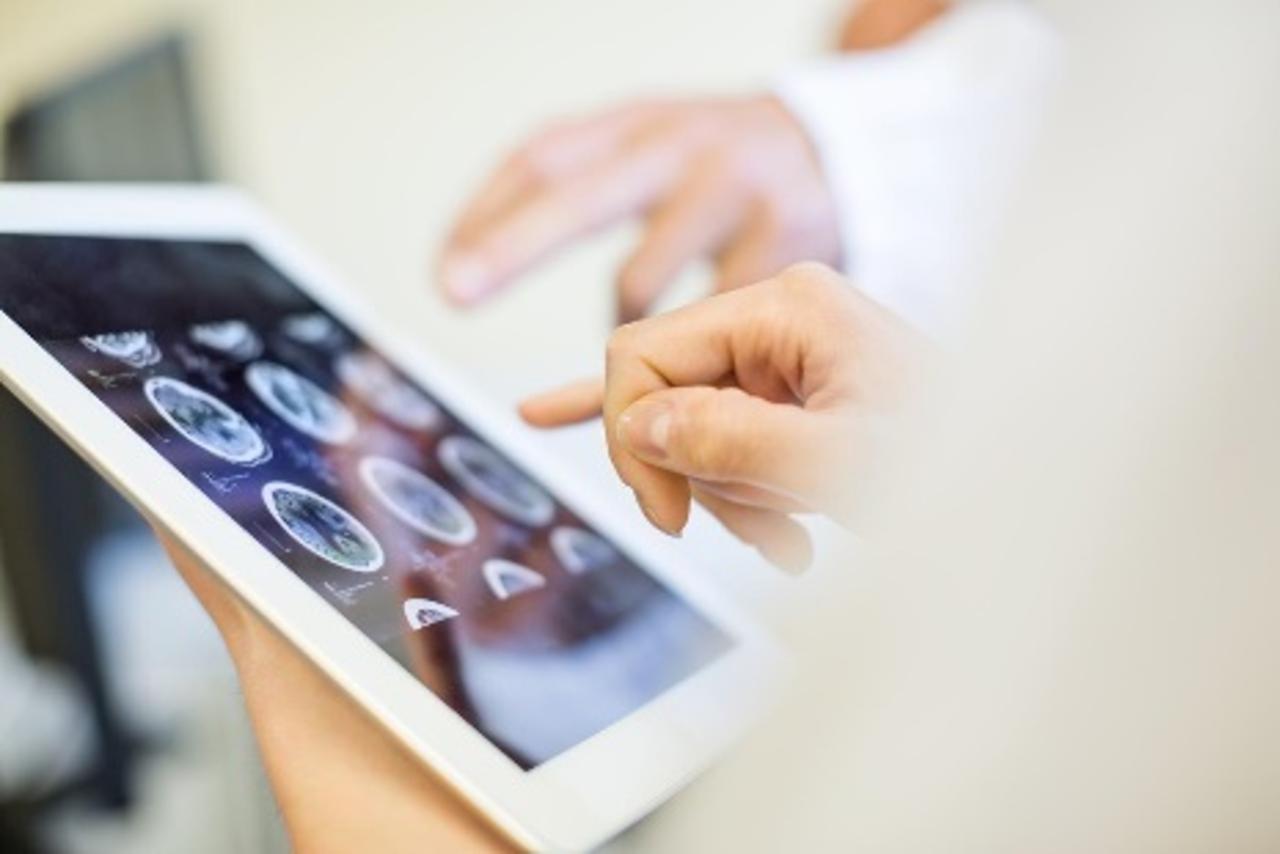
When it comes to stroke diagnosis and treatment, timing is everything: for every minute delay in treatment, 1.9 million brain cells are lost.
Specialized wound care for diabetics
Teams at Community Health Centres and Richmond Home Health are working together to better care for clients with diabetic foot ulcers, a type of wound that affects up to a quarter of people with diabetes and is a leading cause of non-traumatic lower-limb amputations.
VCH sees over 100 lower-limb amputations each year due to diabetic foot ulcers. Nurses specialized in wound, ostomy and continence are piloting a new care approach for clients called total contact casting, where the cast makes close contact with the foot, relieving pressure on the wound and promoting faster healing.
“When used appropriately, casting can heal a foot ulcer in four to 12 weeks, compared to current healing times of over 20 weeks," said Christina Hagner, Clinical Nurse Specialist, VCH. “Total contact casting can also help prevent wound infection, re-hospitalization, and amputation and helps us vastly improve our client's quality of life. Our goal is to have total contact casting become routine care across VCH."
In addition, this process helps address health-care inequities. Indigenous people with diabetes experience higher rates of lower-limb amputations than the general population. By improving diabetic foot ulcer treatment outcomes, it helps reduce health disparities in Indigenous communities.
A gold standard in care, total contact casting has many benefits including:
-
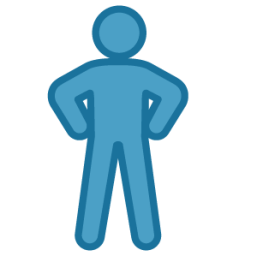
Reducing amputations
-
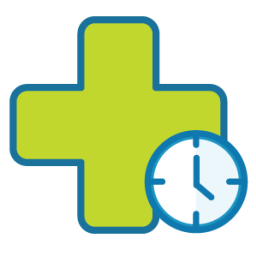
Speeds healing time
-

Cost savings


Indigenous people with diabetes experience higher rates of lower-limb amputations than the general population. By improving diabetic foot ulcer treatment outcomes, it helps reduce health disparities in Indigenous communities.


